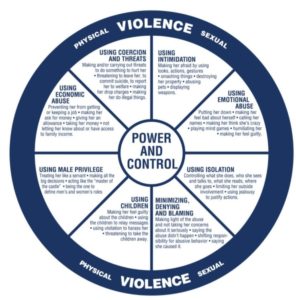Anova defines abuse as any act used intentionally to harm, injure, control, coerce, threaten, intimidate or create fear for safety in another person. Domestic violence is abuse, control, and/or violence that occurs in the context of a family or partnership. It can happen between intimate partners, between siblings, between parents and children, and/or between adult children and elderly parents.
The use of abusive behaviours and/or violence is a choice. Violence and abuse occur deliberately, as a choice made by the abuser, not due to the abuser’s “loss of control”. Abusers are able to control their behavior, which you can see in the ways they pick whom they abuse (partner vs. neighbour, for example), when and where they abuse their partner (they wait until they get home from restaurant or party, stop when police arrive, choose less visible body parts to target) and what they destroy or injure (will break their partner’s sentimental items or hurt their partner’s pet, not their own).
Abuse is not always physical. Although physical violence may happen, the ways in which abusers maintain power and control are often harder to see. The Power and Control Wheel was created by abuse survivors to help victims better understand how they may be being abused in ways that are harder to spot.

If you or someone you know is in an abusive relationship and you’re wondering about legal rights, here is a legal rights handbook full of excellent information.
If you would like more information about support services at Anova, please visit our support page.


